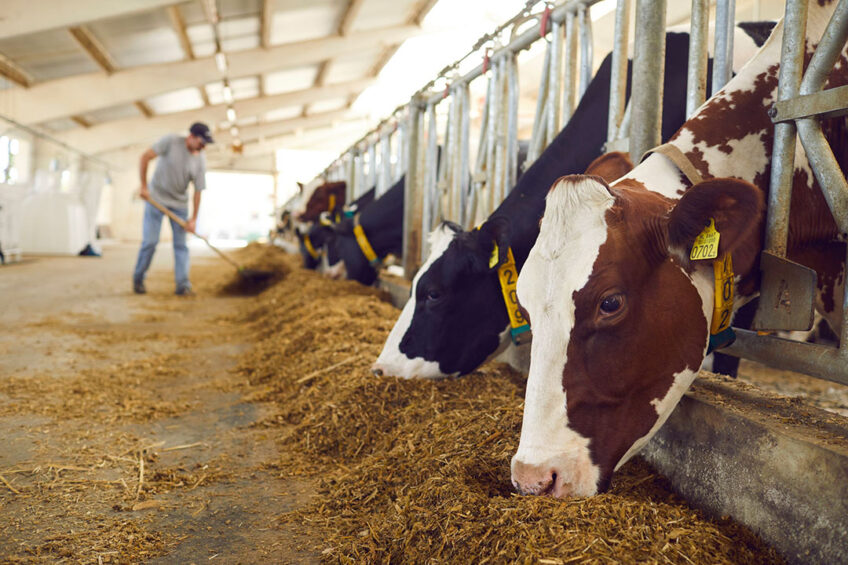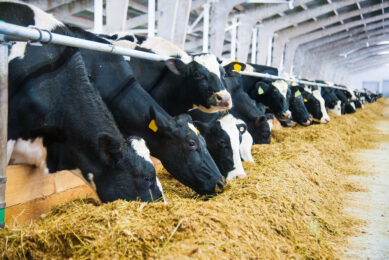Fat nutrition in dairy diets – what are the latest findings?

Fat is a key macro-nutrient in animal nutrition and our understanding of the importance of fat in dairy cow rations has increased substantially over recent years, particularly in relation to the effects of individual fatty acids (the building blocks of fat).
The year that just passed saw a further tranche of fatty acid research data presented at scientific conferences such as the American Dairy Science Association and the International Symposium on Energy and Protein Metabolism and Nutrition, as well as published in scientific journals.
Considerable research effort has been directed toward the evaluation of the effects of palmitic (C16:0) and oleic (C18:1) fatty acids on production attributes of dairy cows, parameters influencing digestibility of dietary fat and specific fat supplements, and the influence of fatty acids provided in the diet on milk processing parameters. It is clear that the focus of research has developed to not only include productivity effects at farm level, but also on the effect of the output from the dairy farm on the end uses of the milk produced. Individual highlights of some key research papers are summarised below.
Palmitic acid research
The use of what are commonly referred to as ‘high-C16’ supplements (typically 80-90% C16:0) is common in the global dairy industry and our understanding of these rumen-inert products continues to increase with ongoing research.
· The effects of ‘high-C16’ supplements offered at 2% of diet dry matter (DM) and x2 or x3 milking per day were evaluated with early lactation dairy cows in a study by Laval University in Canada. Supplementing with C16:0 increased milk yield from 46.2 to 48.0 kg/d, and milk fat from 3.77 to 4.03%, with no effect on milk protein concentration (3.21%). Milking x3/d increased milk yield by 3 kg/d, though decreased milk fat by 0.12% without affecting milk protein concentration (3.21%). However, yields of both milk fat and protein were increased with the additional milking frequency. These data provide further support for the performance benefits of ‘high-C16’ supplements assessed in terms of milk and milk fat production.
· In other work, Michigan State University (USA) evaluated the effects of offering a ‘high-C16’ supplement to heifers from calving to 23 days in milk, reporting significant increases in milk fat in week 2 (+0.36%) and week 3 (+0.37%), but no effects recorded on DM intake or milk yield across the trial period. These are amongst the first data where the effects of ‘high-C16’ supplements have been evaluated in first parity animals and demonstrate that milk fat benefits can be achieved regardless of parity.
· Using in vitro studies, researchers from the University of Florida and the University of Utah reported that unsaturated fatty acids (non-rumen-protected) reduced fibre digestibility, acetate and total volatile fatty acid (VFA) concentrations. These data concur with established effects of non-rumen-protected fatty acids on fibre digestibility and support the use of rumen-protected fat supplements to increase fat supply without the negative effects on rumen function. Furthermore, the addition of C16 fatty acids increased both fibre digestibility and total VFA concentration, indicating beneficial effects on rumen fermentation by supplementation of this product type.
Oleic acid research
The effect of oleic acid on increasing the partitioning of nutrients toward body fat has been established only very recently.
· In a study at Michigan State University, researchers established supporting data demonstrating that the increased partitioning of energy to body fat due to increasing oleic acid supply is partly mediated through elevated plasma insulin. In a further study, data were presented indicating that oleic acid can reduce the mobilisation of body fat stores and stimulate lipogenesis. These results provide additional support for the benefits of supplementation with higher-oleic acid supplements in the early lactation period to minimise body fat loss and the associated negative effects on health and productivity.
· Further US data noted that oleic acid supplied in rumen-protected calcium salt form improved DM, fibre and total diet fat digestibility compared to oleic acid delivered to the rumen in a non-rumen-protected form. These results support the use of rumen-protected calcium salt supplements in the early lactation period to deliver essential oleic acid to the small intestine, avoiding the negative effects of unprotected oils in the rumen on fibre digestibility and feed efficiency. Calcium salt supplements remain the most-effective method of delivering oleic acid through the rumen to the small intestine for digestion and subsequent use in biological processes.
Dietary fatty acids and milk properties research
The effect of fat supplementation on the properties of milk fat for the manufacture of dairy products has received considerable attention recently. Data were reported on the effects of milk fat on frothing qualities and factors affecting free fatty acid concentration of milk (which influences stability and quality). Effects of fat supplement type on the hardness of subsequent manufactured dairy products continued to receive primary focus.
· Studies on butter hardness as affected by fatty acid supplements were reported by researchers from the Ohio State University (USA). Supplementation of a ‘high-C16’ formulation increased hardness of butter, whereas the inclusion of a rumen-protected calcium salt product (containing lower-melting point oleic acid) reduced butter hardness.
· In a further study by the same group, increasing levels of a ‘high-C16’ supplement at intervals from 0 to 2% of diet DM resulted in linear increases in butter hardness.
These data indicate that type of fat supplement included in dairy rations should be considered to help ensure that the most appropriate functional and physical properties of milk fat are achieved as required by a particular milk processor for the manufacture of specific dairy products.
Fat digestibility research
Energy supply and associated non-caloric benefits from fat supplementation of diets are only achievable if the nutrient is digested. With its very high energy density, even small improvements in digestibility may elicit marked increases in efficiency of use in diets and have driven the interest in the investigation of factors which may improve this parameter.
· Michigan State University evaluated data from published studies and reported that increased inclusions of whole cottonseed in the diet reduced digestibility of neutral detergent fibre (NDF) and increased total diet fat digestibility. However, while no effect was observed on milk yield, yields (kg/d) of both milk fat and milk protein were increased with increasing cottonseed.
· In a further study at Penn State University (USA), increasing the concentration of whole cottonseed in the ration at intervals from 0 to 9.9% increased loss of intact seeds in the faeces, though losses as a proportion of intake were similar, averaging 2.3% of seeds consumed escaping digestion and appearing in the faeces.
· Several US studies evaluated the potential of a range of emulsifying compounds to improve fat digestibility. No significant effects of lecithin, lysophospholipids or soya phospholipids were reported across the studies, but beneficial effects of polysorbate-C18:1 were identified. Increasing fat digestibility is key to improving feed efficiency and energy supply, though data from these studies highlight the challenge of finding biological substances that can positively affect digestibility and be useful in practice.
· Fatty acid profile of fat supplements is a key determinant of the production effects when included in dairy diets. Penn State University reported no benefits to milk or milk fat yield by inclusion of a high (55%) stearic acid (C18:0) (with 36% C16:0) fat supplement at 0, 1, 2 or 3% of diet DM, though milk fat % increased up to the 2% inclusion rate. These findings agree with the well-established poor digestibility of C18:0 fatty acids when supplied in fat supplements, which can reduce energy available for production relative to fat supplements based on other more digestible fatty acid profiles.
The extensive number of research papers on fatty acid nutrition in dairy cows published through 2022 is a strong indicator of the knowledge still to be gained on this key nutrient. It is important we continue to monitor and act on new data to ensure we continue to provide the most appropriate fatty acid formulations and advice to farmer customers.
Join 13,000+ subscribers
Subscribe to our newsletter to stay updated about all the need-to-know content in the dairy sector, two times a week.










